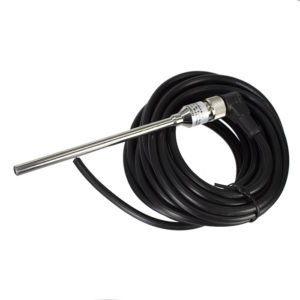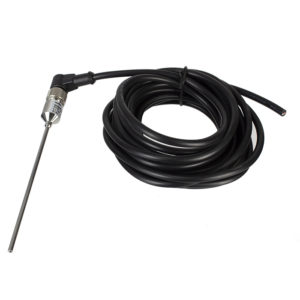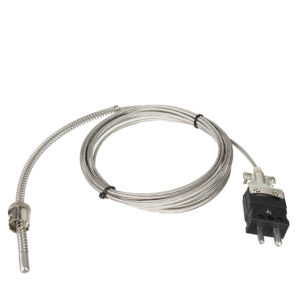Description
RTD/PT100 temperature sensor used to measure temperature
Many people may not know about the important function that a PT100 Temperature Sensor performs. Here at Cartridge Heaters, we are lucky to stock such a useful piece of kit and are here to tell you some more about how it works.
A resistance thermometer, or a PT Sensor in which it may be known by some, is a vital way of measuring temperatures in a substance. They are also called resistance temperature detectors (RTD). To measure temperature accurately and effectively, the resistance of the RTD elements is checked with temperature. In order to achieve a high performance RTD, you will see that their sensors are made up of a length of fine coiled wire, which is wrapped around a ceramic or glass core. This is then placed inside a sheathed probe to protect it from damage and allow it to perform to the highest standards.
The RTD element is then made from a pure material to work in tandem alongside the other, usually platinum, nickel, or copper.
A temperature is calculated from a PT100 Temperature Sensor through a change in resistance when the temperature changes. This is able to determine the temperature through the temperature difference between the two materials.
It is largely accepted that a PT sensor is up to 10 times more accurate than thermocouples, allowing you to obtain the exact temperature that is present at that current moment. As with anything, more accuracy is useful, allowing you to determine the specific temperature easier without including any guesswork. It’s also worth noting that a PT100 Temperature Sensor is made from two or three wires, depending on the accuracy requirements. By getting in touch with our team, you can find out more about the specific product you need.
As well as the standard stock sizes listed on site, we can easily manufacture a PT sensor to fit your specific requirements. Such is the versatility of this product; you can be sure that our talented team can provide you with the solution you require with ease.
Click here for more information on which sensor to use.
PT 100 Temperature Sensor FAQs
How do PT100 Temperature Sensors work?
When finding out how a PT100 Temperature Sensor works, it’s important to learn about its components. It’s named as such as the PT stands for the platinum material that is used in the sensory, with the 100 stating the resistance value being at 100 ohm (Ω) when the temperature is at 0°C.
Starting at 0°C, the probe makes contact with the material that you’re wishing to obtain the temperature of. This sudden change in temperature also changes the resistance of the sensor, allowing the temperature to be calculated. This simple way of working out the sensor’s resistance allows you to easily read the temperature of the material in question.
How to test PT100 Sensors?
Finding a fault with your PT sensor can be easy enough to achieve. All you need to do is attempt to use the sensor as normal as if you were trying to work out the resistance to read the temperature. One well known method of testing a PT100 temperature sensor is to fill a container or thermos flask with water that is either 0°C or 100°C in temperature. You should then leave the sensor to settle in the flask before checking its resistance. If the reading changes at 0°C or reads other than 100°C, then you will know there’s a fault with the sensor.
If this is the case, be sure to check out if there are any breaks on the sheath or the tip of the sensor, as this will likely be why the fault has occurred.




